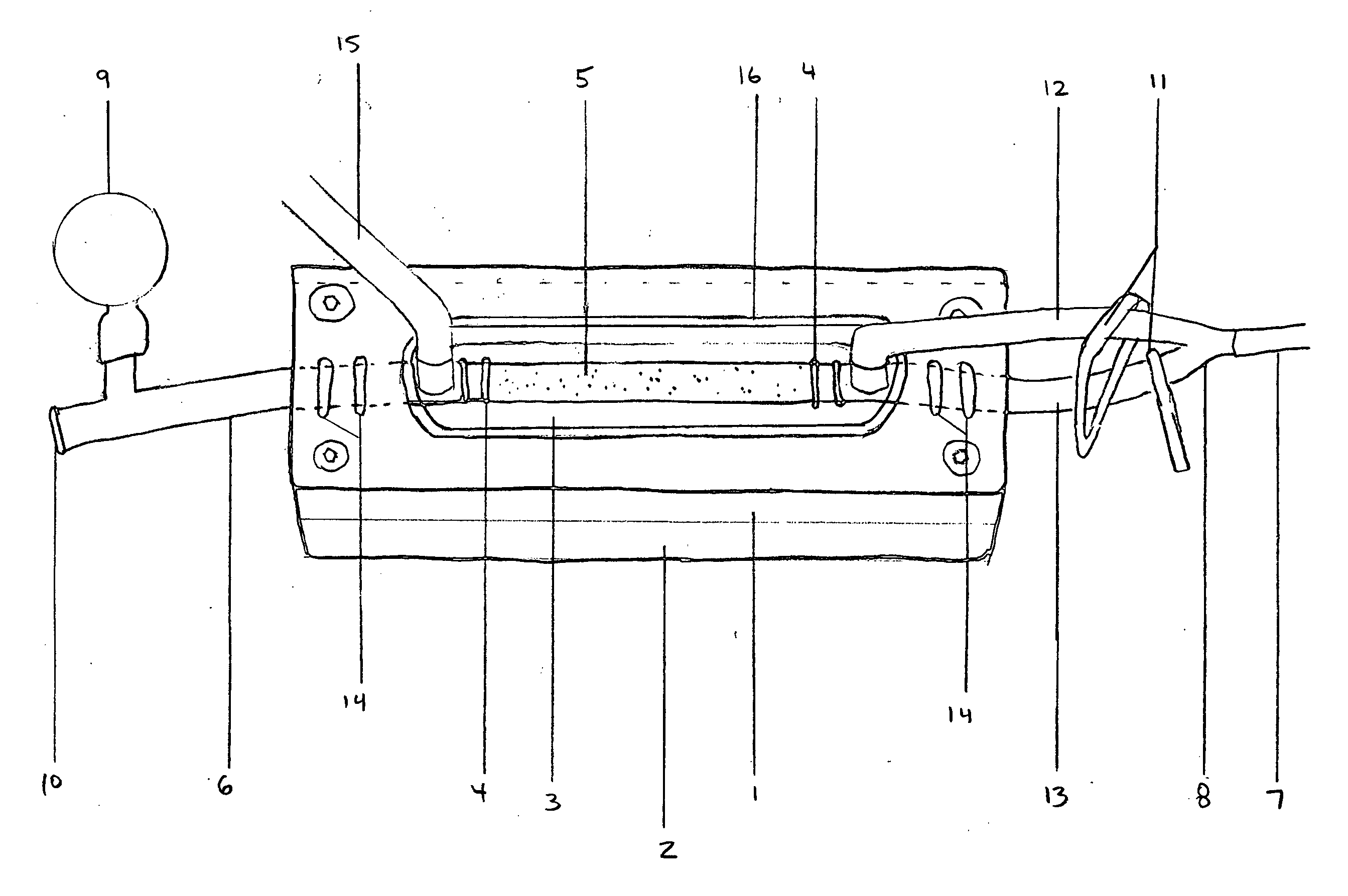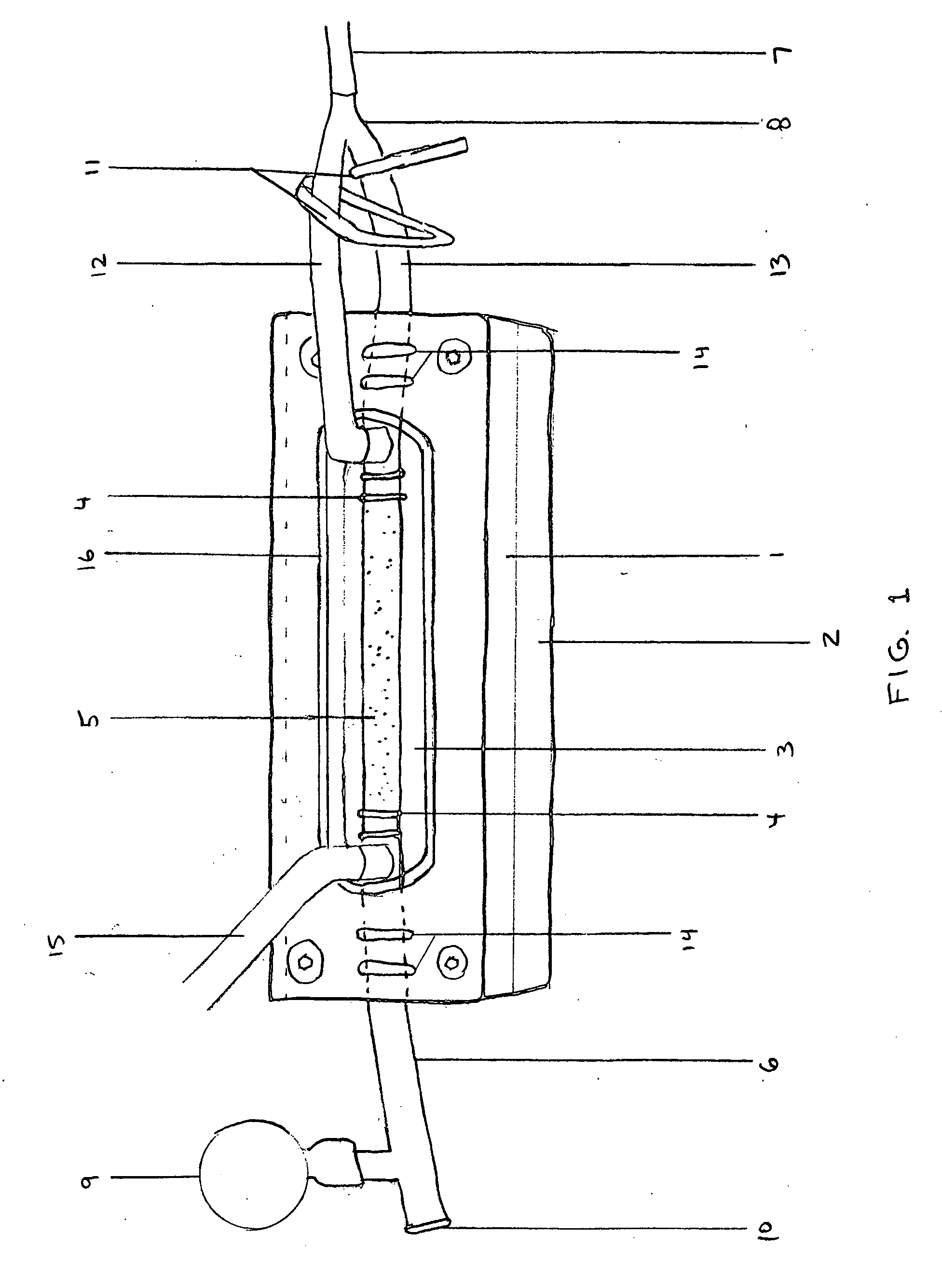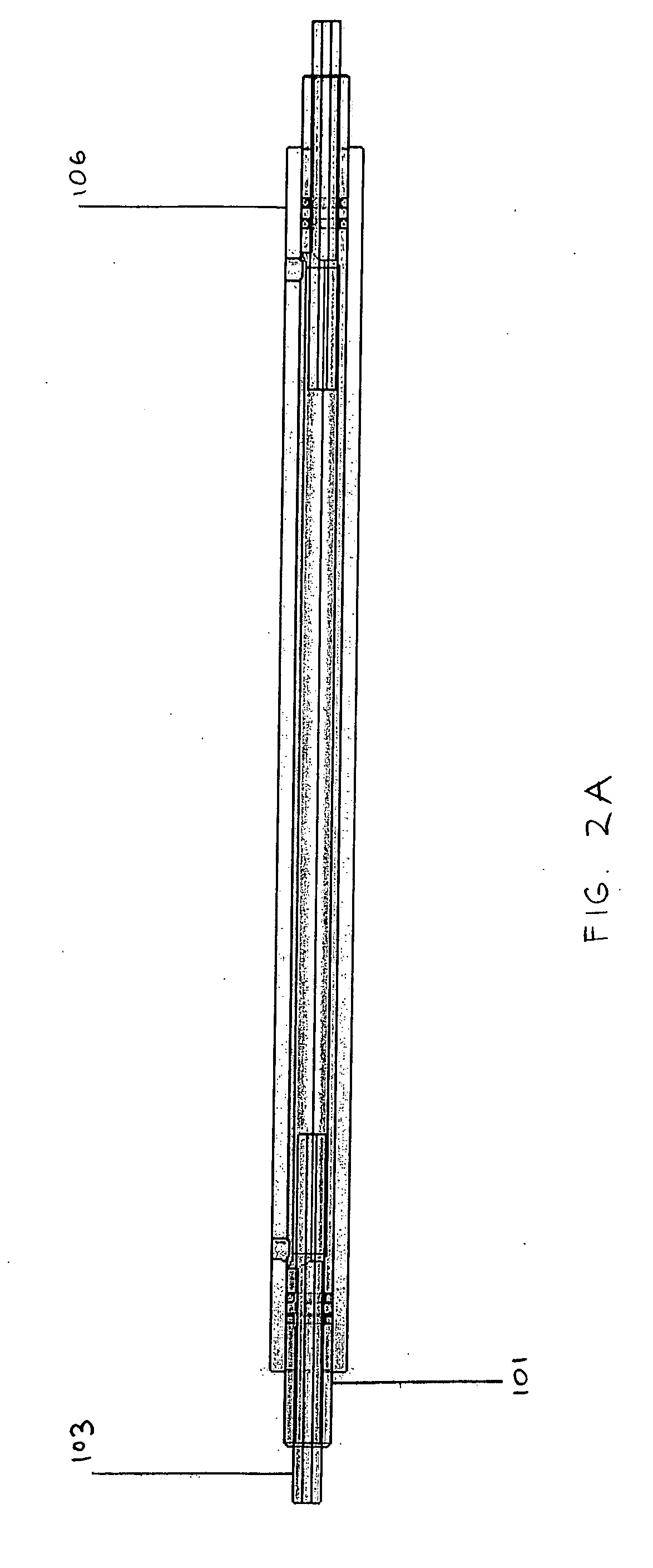Cell sodding method and apparatus
- Summary
- Abstract
- Description
- Claims
- Application Information
AI Technical Summary
Benefits of technology
Problems solved by technology
Method used
Image
Examples
example 1
[0053] We used a sustained low pressure head (10-50 mmHg) to maintain a transmural pressure gradient for 1 min up to 24 hours to seed early passage microvascular endothelial cells isolated from adipose tissue onto commercially obtained (Impra) expanded Teflon (ePTFE) small diameter grafts (3-4 mm Inner Diameter). The microvascular endothelial cells were obtained according to the method of U.S. Pat. Nos. 4,820,626; 5,230,693; and 5,628,781. Grafts were primed with 70% ethanol which was then replaced with media (M199, Invitrogen) containing 20% FBS (Invitrogen) and antibiotics (Invitrogen) prior to being mounted in vascular biochambers. The cells were introduced into the biochamber at a density of 1×106 cells / cm2.
[0054] In a series of experiments with transmural pressure, followed, in some cases, by lumenal perfusion, endothelial cells were shown to actively adhere to the ePTFE and elastin surfaces. A microscopic view of cross sections after 6 hours of perfusion showed expression of ...
example 2
[0056] An ePTFE graft was cleared using 10 min 70% EtOH, then 10 min 100% EtOH, then 24 hours in MVEC media (M199E, 1 μg / mL Amphotericin B, 20 μg / mL Penicillin / Streptomycin, 15% heat-inactivated FBS). The graft was then sodded with 0.82×106 MVEC cells / cm2 with a BOS gear-pump pressure head of about 20 mmHg for 4 hours. The sodded graft was then fixed in 10% neutral-buffered formalin and embedded in paraffin, then sectioned. After histoanalysis, one of two blocks was melted down, the ePTFE deparaffinized, and dehydrated in 100% EtOH. The resulting sodded graft was then critical point dried, mounted, and sputter coated for SEM, and imaged on an Hitachi S-800 field-emission SEM. FIG. 6 shows an SEM image of endothelial cell adhesion on an ePTFE graft substrate sodded with 0.82×106 MVEC cells / cm2 for 4 hours (about 20 mmHg).
example 3
[0057] We denucleated a 4 mm internal diameter ePTFE graft substrate having a length of 10 cm using 10 min 70% ethanol, then 10 min 100% ethanol. The graft was then sodded in a biochamber as shown in FIG. 2 at 5×105 cells / cm2by applying 10 minutes transmural flow (˜50 mmHg), followed by 20 minutes luminal flow (10 mL / min). The resulting MVEC-sodded graft was fixed, stained with BBI, and imaged. FIG. 7 shows the proximal and distal ends of a 10 cm long vascular ePTFE graft sodded with 5×105 cells / cm2 for 10 minutes (about 50 mmHg) transmurally, followed by 20 minutes of luminal flow (10 mL / min), resulting in highly uniform cell adhesion at each end of the long graft.
PUM
 Login to View More
Login to View More Abstract
Description
Claims
Application Information
 Login to View More
Login to View More - R&D
- Intellectual Property
- Life Sciences
- Materials
- Tech Scout
- Unparalleled Data Quality
- Higher Quality Content
- 60% Fewer Hallucinations
Browse by: Latest US Patents, China's latest patents, Technical Efficacy Thesaurus, Application Domain, Technology Topic, Popular Technical Reports.
© 2025 PatSnap. All rights reserved.Legal|Privacy policy|Modern Slavery Act Transparency Statement|Sitemap|About US| Contact US: help@patsnap.com



